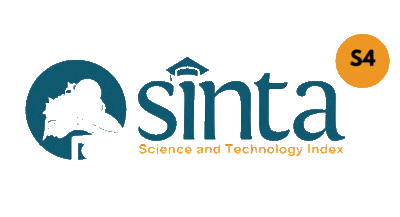PENERAPAN SPATIAL DURBIN MODEL PADA DATA PENYAKIT MALARIA DI INDONESIA
DOI:
https://doi.org/10.47111/jti.v19i2.20334Keywords:
Customized Contiguity, Malaria, Spatial Durbin Model, Lagrange Multiplier test, Queen ContiguityAbstract
The Spatial Durbin Model (SDM) is a special case of the Spatial Autoregressive (SAR) model, involving the addition of spatial lag effects of both the dependent and independent variables. The parameter estimation used in this study is the maximum likelihood estimator. Parameter estimation for the SDM is performed at each observation location using spatial weighting. The spatial weights are calculated based on queen contiguity and customized contiguity weighting methods. This study aims to obtain the SDM and identify the factors influencing the number of malaria cases in Indonesia in 2023. The Lagrange Multiplier (LM) test indicates that there is a spatial lag in the dependent variable, with the parameter ρ being significant at a significance level of α = 0.1. Based on the results of the SDM analysis, it was found that the factors directly influencing the number of malaria cases in Indonesia in 2023 are the percentage of poor population, number of medical personnel and the percentage of households with access to adequate drinking water services. Meanwhile, the factors that have an indirect or spatial lag effect are the open unemployment rate and the percentage of poor population.
Downloads
References
Efendi, A., Wardhani, N.W.S., Fitriani, R., & Sumarminingsih, E. (2020). Analisis Regresi Teori dan Aplikasi dengan R. Malang: UB Press.
Anselin, L. (1988). Spatial Econometrics: Methods and Models. Netherlands: Kluwer Academic Publishers.
Yasin, H., Hakim, A.R., & Warsito, B. (2020). Regresi Spasial (Aplikasi dengan R). Pekalongan: Wade Group.
Cressie, N. (1991). Statistics for Spatial Data. New York: Wiley.
Sari, D.N., Hayati, M.N., & Wahyuningsih, S. (2020). Model Spatial Autoregressive Moving Average (SARMA) pada Data Jumlah Kejadian Demam Berdarah Dengue (DBD) di Provinsi Kalimantan Timur dan Tengah Tahun 2016. Jurnal Eksponensial, 11(1), Mei 2020.
Pratiwi, L.P.S., Hanief, S., & Suniantara, I.K.P. (2017). Pemodelan Menggunakan Metode Spasial Durbin Model untuk Data Angka Putus Sekolah Usia Pendidikan Dasar. Jurnal Varian, 2(1).
Wardani, S., Debataraja, N.N., & Rizki, S.W. (2018). Analisis Dependensi Spasial pada Data kemiskinan dengan Pendekatan Spatial Durbin Model (SDM). Buletin Ilmiah Math, Stat, dan Terapannya (Bimaster), 7(4), 319 – 328.
Utami, T.P., Hasyim, H., Kaltsum, U., Dwifitri, U., Meriwati, Y., Yuniwarti, Paridah, Y., & Zulaiha. (2022). Faktor Risiko Penyebab Terjadinya Malaria di Indonesia. Jurnal Surya Media, 7(2), Februari 2022, 96 – 107.
Rokhayati, D.A., Putri, R.C., Said, N.A., & Rejeki, D.S.S. (2022). Analisis Faktor Risiko Malaria di Asia Tenggara. Jurnal Litbang Pengendalian Penyakit Bersumber Binatang Banjarnegara, 18(1), 79 – 86. doi: https://doi.org/10.22435/blb.v18i1
Kementerian Kesehatan Republik Indonesia. (2023). Profil Kesehatan Indonesia Tahun 2022. Jakarta: Kementerian Kesehatan.
Santoso, S. (2012). Statistik Parametrik. Jakarta: Media Komputindo.
Kosfeld, R. (2006). Spatial Econometric. Germany: University of Kassel.
Lesage, J.P., & Pace, R.K. (2009). Introduction to Spatial Econometrics. Boca Raton: CRC Press.












